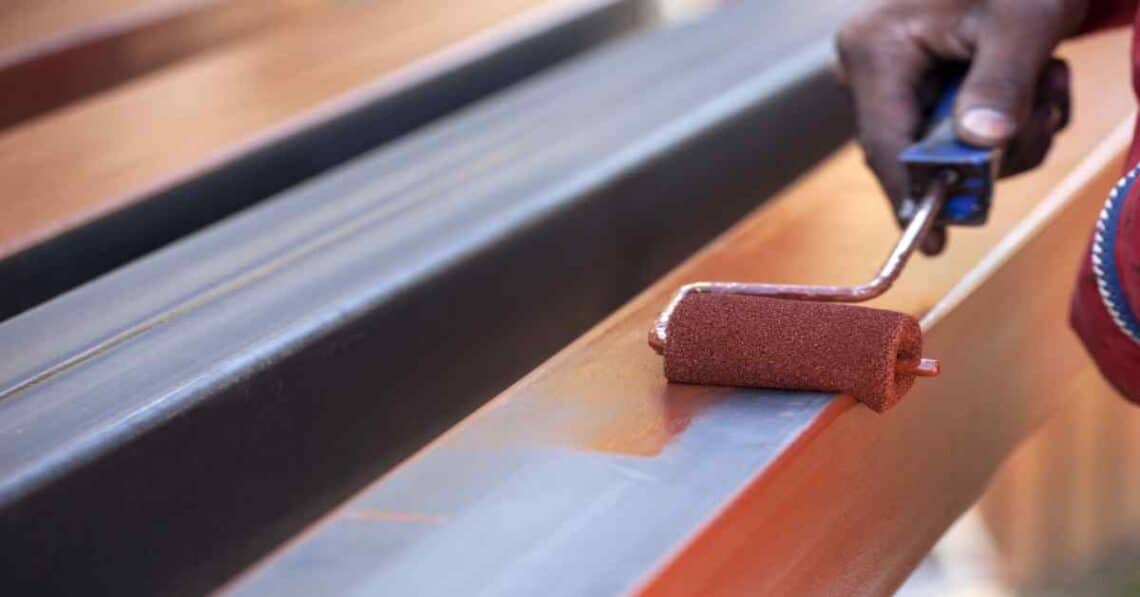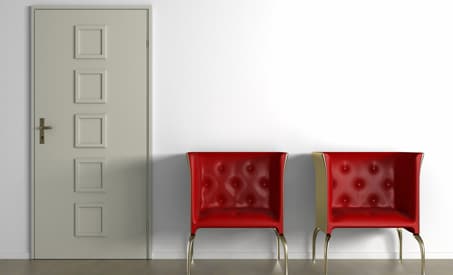(206) 258-6676

Tips for Painting Metals

Metal can be one of the trickiest surfaces to paint. It requires special preparation and special products. If you apply paint without a thought, as if you were painting any other surface, the results may be disappointing. As professional painting contractors, every so often we tackle a job where we have to paint metal surfaces. Here are some tips to help you complete a similar project yourself, or to simply give you the knowledge of what to look for when requesting a professional estimate for painting metals.
Preparation
Like any other paint job, preparation can make or break your final results. If the metal has been previously painted, it’s important to remove any old paint for maximum adhesion. You can remove loose paint with a scraping tool. Unfortunately, with metal surfaces, you might also have to deal with rust. This can really compromise the integrity of your paint job if it is not taken care of. Heavy rust should be removed with a scraping tool or putty knife first. Then, remaining rust residue can be removed using a wire brush. The surface should be cleaned after this to remove any lingering particles from the paint or rust.
Painting: Galvanized Metal
Galvanized metal is often found on gutters and on roofs. Galvanized metal, in particular, is coated with zinc to help combat rust. Surfaces with a zinc coating require a water-based, acrylic primer to start, since oil-based coatings can interact with the zinc and cause peeling. We recommend using a DTM (direct-to-metal) product that is especially formulated for this type of work. We recommend Super Spec HP DTM by Benjamin Moore, a product we frequently work with.
Painting: Ferrous (iron-containing) Metal
Painting ferrous metals can be difficult because you are more likely to encounter rust prior to applying coatings. After completing necessary surface prep, it’s important to apply an oil-based primer to the substrate. This will not only to help prevent future corrosion, but also to create a bonding first layer between the metal and paint. For best results, apply one or two coats of a quality oil-based paint after priming.
Painting: Pre-Primed Metal
If you need to paint any pre-primed metal, it’s important to clean the surface and apply a coat of paint as soon as possible after purchasing. A month is usually an appropriate timeframe. After a month, however, the pre-primed surface may be damaged or susceptible to rust. If you paint at this point you will likely experience bubbling or peeling later on. If this does happen, you will need to clean the surface, scrape off the peeling paint and rust, sand the areas smooth, and spot prime the affected areas with a metal primer before attempting to paint again. Again, we suggest using a Direct-to-Metal paint.
Painting: Factory-Baked Enamel over Metal
This is the most common kind of metal you might encounter on a new garage door or normal door. For this type of metal, we recommend you consider leaving them as they are. The factory enamel will usually outlast a paint job as long as you keep it clean. However, painting may be a good idea if the door does not match the rest of your decor, the quality of the enamel is deteriorating, etc. If you decide to have it painted, however, expect to have it painted again every 5 to 10 years. If you are set on painting, we recommend using a Direct-to-Metal product like the one mentioned above.
And there you have it – the most common types of metal and how to paint them. Of course, it is always advised to consult a trusted professional painting contractor. When it comes to specialty coatings or trickier surfaces you want to ensure a good outcome.

Comments
If some one wishes expert view regarding blogging and site-building then i propose him/her to
go to see this blog, Keep up the good work.
We covered our patio with plastic using 2-sided tape. The removal of the tape was impossible. We tried hair dryers, goo be gone, soap and water to name a few. We are now stuck with much stickness and debris. We would like to paint but how do we get a smooth serface and how do we go about it??? HELP!
Hi there! Maybe try some mineral spirits or a stronger solvent like lacquer thinner? Be sure to use gloves.
If all else fails, you can take a rough-grit sanding block and sand it off! Good luck!
At our office building, it is primarily made of metal. Now I’m not sure whether it is galvanized or ferrous, would there be an easy way to check this or would I have to try different paints out and see? I want to say the metal is ferrous and if so, what would be a good way to see about preparing the surface for painting? There isn’t any rust that I can see so only one way to find out!
This is a good resource on how contractors tell visually! http://www.contractortalk.com/f8/how-do-you-know-if-steel-has-been-galvanized-4186/
You can always tell if a metal is ferrous (iron) by checking to see if it is magnetic.
My husband really wants to paint our garage door, but I’m pretty sure that it has factory-baked enamel over the metal. Because of this, I’m going to show him your point about how the enamel will probably outlast the paint job. However, how long does the enamel typically last?
Hi Katie! We have seen the enamel last anywhere from 10-20 years; it’s definitely built to last. We advise keeping the original finish over repainting if you can deal with the color.